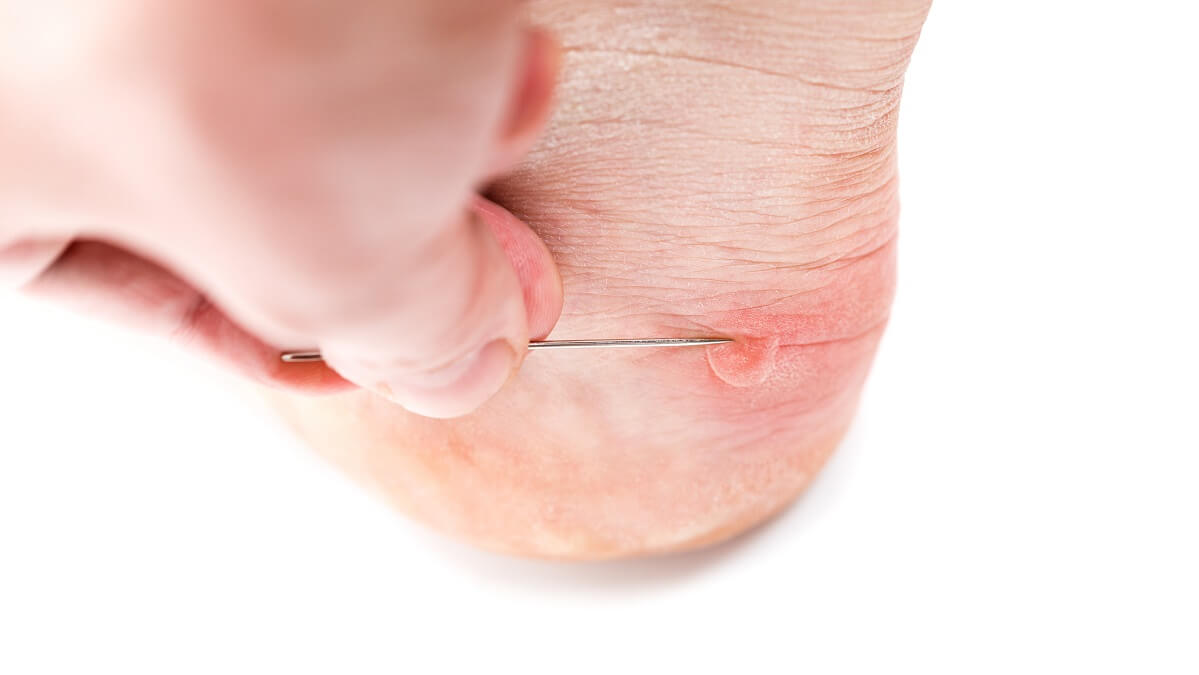A blister is a fluid-filled sac or pocket that forms between the upper layers of the epidermis and can be caused by a number of factors including burns, infections and friction.
While blisters can be painful and unsightly, they are usually your body’s way of protecting itself. Blisters stop further damage to the tissue underneath, giving it time to heal and recover. Depending on the type of injury, blisters can be filled with serum, pus or blood.
Types of blisters
Burn blisters
A burn blister is a fluid-filled covering of skin that forms over a burnt area of the body to protect it from infection. Burn blisters can form over mild to severe burns in the stratum spinosum layer of the epidermis (the layer that helps make your skin flexible and strong).
Allergic reaction blisters
Blisters can also be caused by contact dermatitis. Allergic reactions occur from exposure to allergens, such as certain plants and metals.
These kinds of blisters can appear a few hours to several days after contact with an allergen. The skin around the blister becomes inflamed, red and scaly. If the blisters burst, the skin weeps and scabs form before flaking off.
Friction blisters
Repeated rubbing or friction against the skin of the hands or feet can cause friction blisters. If your skin is moist, you’re more likely to get a blister than if your skin was dry. Blisters caused during exercise are often found in the palms, fingertips, or soles of the feet. More vigorous activity and carrying heavy items while moving both appear to increase the likelihood of foot blisters.
Infectious blisters
These are caused due to a viral or bacterial infection. An infectious blister is usually filled with pus, and the area around the blister is red and sore to the touch. Never ignore an infected blister as it can lead to further complications and cause sepsis or cellulitis, especially in people suffering from circulation problems or diabetes.
Infectious blisters can also lead to secondary impetigo, a contagious bacterial infection of the skin.
Some other infections that can cause blisters are:
- Hand, foot, and mouth disease: young children are most commonly affected, and this disease causes the development of small, painful blisters on the inside of the month, palms and feet.
- Herpes simplex infection: causes genital herpes or cold sores, both characterised by clusters of painful, fluid-filled blisters.
- Chickenpox: the varicella-zoster virus causes chickenpox, which is characterised by clusters of itchy, fluid-filled blisters that form scabs all over the body.
Should you pop a blister or leave it alone?
In general, it is recommended to avoid popping a blister to prevent any chance of further infection. However, if the blister is located in an area that is prone to further inflammation, it might be better to pop the blister and remove all excess fluid.
One of the most important things to keep in mind when popping a blister is cleanliness.
Here’s how to safely pop a blister:
- Rinse the blister area with cool water to remove any surface bacteria.
- Clean the area with an antiseptic solution.
- Gently puncture the edge of the blister with a sterile needle. Remember to only make one single puncture, and do not rub the needle against the blistered skin.
- Press the fluid out of the blister gently using a cotton swab or gauze.
- Keep the overlying skin intact and do not remove it.
- Cover the blister with a moist sterile dressing or gauze.
- Keep applying an antiseptic ointment to prevent further infection. In case of an allergic blister, you can apply an ice pack or calamine lotion over the area to reduce itching.
It is important to keep monitoring the blister for any signs of infection and seek medical help if it does get infected or doesn’t heal within a few days.
Aftercare
Once you have popped the blister, it is important to keep the area clean and dry and change the dressing frequently to prevent infections.
Blister pads are waterproof bandages that help speed up healing by providing protective cushioning around the blister. They are usually recommended for the feet and provide relief from extremely painful blisters and can be found at a supermarket or pharmacy.
Over-the-counter painkillers can help ease the pain caused by the blister.
For friction blisters, you can apply petroleum jelly as an aftercare to prevent the hardening of the skin. Avoid wearing tight clothing around the blister until it is fully healed.
Do you pop blisters or leave them alone? How do you care for blisters? Let us know in the comments section below.
Also read: Rashes in adults and how serious are they?
Disclaimer: This article contains general information about health issues and is not advice. For health advice, consult your medical practitioner.

